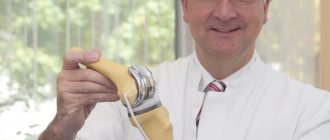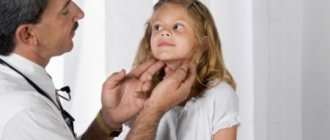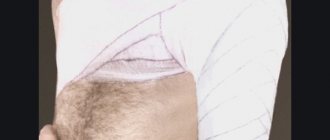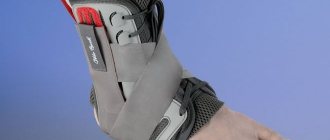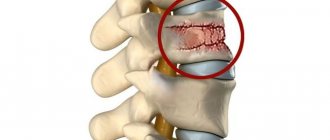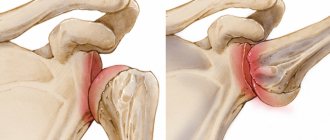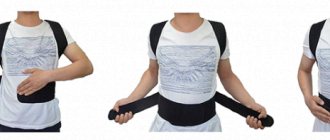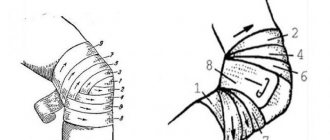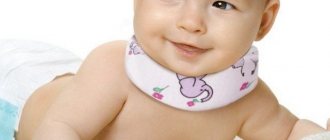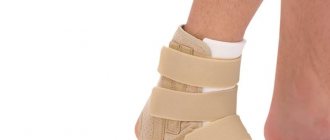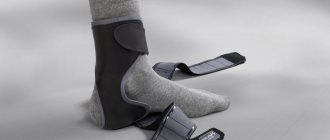General information about dressings
A scarf is a piece of gauze in the form of a scarf or scarf. This is an essential component of a home first aid kit.
Advantages:
- Simplicity and ease of application.
- Easy to make in extreme situations.
- The ability to quickly provide first aid to a large number of injured people.
- Suitable for use as a hemostatic tourniquet.
- Does not require removal when transporting the victim.
- A great self-help option.
- Can be made from scrap materials.
Disadvantages of such a bandage:
- Insufficient fixation strength.
- The need for additional treatment of the wound surface.
- Dressing skills required.
- The need to control the fixation of the bandage.
Why do you need an arm support bandage?
No person is protected from accidents. Each of us hopes for the work of doctors, but before the ambulance arrives, the victim requires first aid. An effective remedy for a hand injury is to apply a scarf bandage. A modified analogue of such a product is considered a medical bandage.
The use of an orthopedic product is advisable for injuries of the upper limb:
- Fractures, sprains, bruises and dislocations.
- During the rehabilitation period after operations and injuries.
In case of serious injuries and pathologies, a Deso-type fixing bandage of the shoulder joint is used. The orthosis is a tight-fitting shoulder, part of the back, chest and a corsage encircling the waist.
What is a Deso bandage?
The classic bandage is made from a bandage that is repeatedly wrapped around the arm, back and chest. In this option, you will not be able to swim, treat the skin under bandages, or change your underwear. The modern Deso headband is removable and made of strips of breathable hypoallergenic fabric with fasteners. With the doctor's permission, it can be removed for hygiene procedures or dressings.
A special feature of the bandage is that it “turns off” all movements in the shoulder joint. The shoulder is the most mobile segment of the body, because its movements occur in all planes. The Deso clamp eliminates excessive mobility in any direction to create maximum rest for the hand.
Indications for wearing, disadvantages and alternatives
The Deso bandage was developed for the treatment of some clavicle fractures, but is also used for other types of pathology. Effective, simple and inexpensive fixation is popular for a variety of shoulder and girdle problems. Most often, patients wear this product when:
- Fractures of the surgical neck of the humerus
- Fractures of the tuberosities of the humerus
- Shoulder dislocation
- Humeroscapular periarthritis
- Arthrosis of the shoulder joint
However, the advantage of the bandage is also its disadvantage. Complete restriction of movement in the shoulder is permissible only for a short period of time, otherwise adhesions will appear in the joint. The shoulder stops rising, and pain or swelling may increase. Therefore, the Deso bandage is prescribed for immobilization for up to 2-3 weeks.
The best alternative for long-term or short-term correct fixation of the shoulder is the so-called abduction pillow. This splint holds the arm in the most favorable position both for healing the fracture and for preventing adhesions. The abductor pad has replaced the Deso bandage and is gradually replacing it due to the absence of side effects and better results.
Method of application and features of choice
For fractures and after dislocations, the bandage is worn around the clock, preferably on a T-shirt or tank top. Fixation periods vary from 2 to 8 weeks. If your injury is not as severe, your doctor may allow you to periodically remove the brace to wash or treat your skin. Most often, the amount of movement allowed gradually increases as damaged tissue regenerates. To “free” the shoulder, the doctor may recommend removing the transverse belt or loosening the main one.
Modern Deso dressings are available at Medtechnika Orthosalon. Models vary in size. The consultant measures the length of the forearm, which is the main parameter for choosing the appropriate option. When purchasing from an online store, you can measure the length of your arm yourself, since in any case, each bandage is adjustable in length within several sizes.
The stores also have a large selection of related products for rehabilitation and rapid healing of fractures. These include massagers, electrical stimulators, and needle rollers. Consultants will answer any questions about the products, their use and care.
Purpose
The bandage allows you to fix the arm, leg, head and other damaged part of the body. By limiting involuntary movements of the injured limb, pain decreases.
The scarf is made from gauze or other fabric. In emergency conditions, you can construct a device from a shirt or trouser leg.
Headband
The scarf reliably fixes the injured limb after treating the wound surfaces with antiseptic compounds. To use the fixator, no special knowledge or skills are required. Headscarves are used to fix the lower leg, mammary gland, injured arm, etc.
The scarf is applied as follows:
- The patient is in a sitting position. The hand and wrist should be above the elbow joint. The ends of the scarf are connected at the corners to form a triangle. The bandage is placed under the elbow near the shoulder joint.
- The top of the scarf is wrapped around the neck and down to the sore limb. The remaining end on the other side is wrapped around the forearm. The node is fixed on the damaged side.
- The fabric near the elbow remains slightly pulled back for better positioning of the arm. The bandage is fastened with tape or special devices. Blood circulation is not impaired, the patient feels relief.
General recommendations
There are two types of dressings: open and closed. Products differ in the way they are applied.
A closed bandage is applied after rolling into a roll, and an open bandage is applied in the form of a scarf. The open type of product is made of sterile fabric. Do not apply a bandage at an angle to the wound, so as not to provoke intense bleeding. Do not pull the product tightly.
Differences between a bandage and a scarf bandage
There are no fundamental differences between these products. Both devices are made in the form of a case in which the arm bent at the elbow is located. The scarf is secured with strings, and the bandage is secured with wide straps.
A scarf is a piece of fabric measuring 80x80x115-130 cm, folded in half in the shape of a triangle. This is an indispensable device in emergency situations when providing first aid.
The factory bandage has a more advanced design. The product is made of soft, breathable fabrics. Models are equipped with additional clamps and are easy to use.
The bandage immobilizes the limb, relieves muscle tension and relieves swelling.
General rules for overlay
When applying an immobilizing orthosis, the following recommendations must be followed:
- Do not apply a bandage to the wound.
- The bandage is tightly fixed to the damaged surface and tied tightly.
- A sterile bandage is applied to the wound surfaces.
Types of bandages to support a fractured arm
The device for a sling for a broken arm is the most difficult. The fixation must be carried out by a doctor, otherwise there is a risk of improper bone fusion. Bandages for immobilization for fractures are applied only after x-rays.
As first aid, it is allowed to use a scarf in the form of a triangular piece of fabric.
Types of dressings:
- First aid splints.
- Deso bandage.
- Delbe rings.
- Splints.
- Plastic version of plaster.
Headbands
In emergency situations, when providing assistance to victims with wounds of various parts of the body, bandages are often used to fix sterile material on the wounds. At the same time, the time for treating wounds is significantly reduced, which allows timely assistance to a larger number of victims. Kerchief dressings also have their drawback: the dressing material is not completely securely fixed, but in extreme conditions this circumstance can be neglected. Moreover, with the correct application of scarves, this drawback can be minimized.
For such dressings, a triangular scarf made of dense material measuring 80 80 110 cm is most often used.
Scarf bandage on the hand and foot (Fig. 12). The scarf is spread on the table, its base is folded twice so that a belt 1-2 cm wide is obtained. Then the victim’s hand is placed on the scarf so that the fingers are directed to the top of the scarf. The upper corner of the scarf folds back, covering the hand and extending beyond the wrist joint. The ends of the scarf are wrapped and crossed above the wrist joint, covering the hand with
both sides,
Rice. 12 scarf bandage Fig. 13 scarf
On the hand and foot on the forearm
wrapped around the hand and tied in a knot. A bandage is also applied to the foot.
Scarf bandage on the forearm and shin (Fig. 13). The forearm is placed on an unfolded scarf, the larger side of the triangle facing the elbow joint. The edge of the scarf is located at the level of the wrist joint. The long ends (corners) of the scarf are wrapped around the forearm and secured with pins. A bandage is also applied to the lower leg.
Scarf bandage on the elbow and knee joint (Fig. 14). The hand is placed on a scarf spread on the table so that the forearm is at the base of the scarf, and the back of the shoulder is at the top. The free ends of the scarf are wrapped on the palmar surface of the forearm, crossing at the level of the elbow. Then the ends are wrapped around the shoulder so that they press the top corner of the scarf, and tied with a knot above the elbow. A knot tied in the elbow can cause swelling from pressure. A bandage is also applied to the knee joint.
Rice. 14 scarf bandage Fig. 15 scarf
On the elbow on the upper limb
Scarf bandage on the upper limb (Fig. 15). Used as support for limb immobilization.
The injured arm is bent at the elbow at an angle of 90 degrees. The scarf is placed under the forearm so that the apex of the right angle is directed towards the elbow joint of the affected limb. In this case, one end lies on the shoulder girdle of the sore side, and the other hangs along the body. After this, one end of the scarf is lifted and thrown over the shoulder girdle of the healthy side. When transporting while sitting, the ends are tied on the back of the neck, when transporting while lying down - on the side surface, so that there is no pressure from the knot. After the ends are tied, the top of the right angle is pulled out from under the shoulder, curved around the shoulder and pinned on the front surface of the chest to the scarf.
Scarf bandage on the thigh (Fig. 16). This bandage is applied using two scarves. The first is applied to the outer surface of the thigh with the tip pointing upward. Both free ends wrap around the thigh, cross on its inner surface and are tied on the outside with a knot. Another scarf is folded into a strip and placed in the form of a belt on the victim’s belt. The top of the first scarf is passed under this belt, pulled down and secured with a pin on the outside of the thigh.
Scarf bandage on the thigh stump (Fig. 17). The scarf is placed on the back surface of the stump with the top down. Then the top is lifted, going around the stump, up to the front surface of the thigh. The loose ends of the scarf wrap around the thigh, cross at the back and tie in the front, pressing the top.
| Rice. 16.Thigh scarf _ |
| Fig. 17. Bandage on the thigh stump |
| Rice. 18. Small cap bandage |
| Rice. 19. crotch scarf |
Small cap bandage (Fig. 18). Used for wounds and inflammatory diseases in the crown, back of the head and temple. The scarf is placed on the head with the base on the forehead and the top facing the back of the head. Both free ends are drawn back, crossed at the back of the head, pressing the top with them, and tied in a knot on the forehead. The loosely hanging top is folded up and secured with a pin.
Scarf bandage on the perineum and buttocks (Fig. 19). The bandage is applied so that the base runs along the lower back. The ends of the scarf are tied in front, and the top is pulled up between the legs and attached to the knot with a pin.
Scarf bandage on the stomach. This bandage is applied similarly to the previous one, but the base of the scarf runs along the stomach and the ends are tied at the back, on the lower back.
